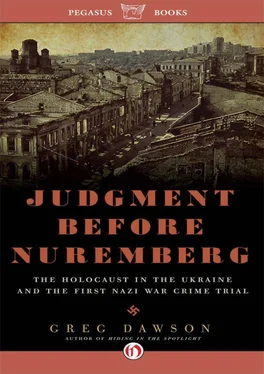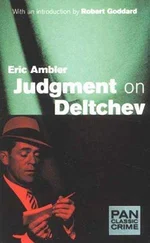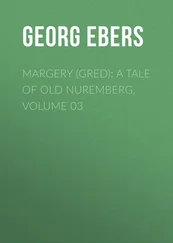On the other hand, Blobel knew quite well where the bodies were buried in Ukraine—34,000 of them at least—and the massacre at Babi Yar he directed was so expeditiously completed that Heydrich had nominated Blobel for a War Service Cross. “It’s almost impossible to imagine what nerves of steel it took to carry out that dirty work down there,” said a witness at the ravine. “It was horrible.” So perhaps Blobel’s solid resume as an efficient killer allowed Heydrich to overlook the recent emotional meltdown and the chronic drunkenness and to give Blobel a task that not even the most diabolical sorcerer could accomplish. And he was hardly that.
Blobel’s deposition for the war crime trial in Nuremberg is the melancholy self-portrait of a quintessential cipher, an ineffectual drifter through life whose failures led him to the Nazi party and ultimately the power of life and death over tens of thousands. This is his journey, in abbreviated form:
“I was born in Potsdam on 13 August 1894. I attended grammar school and vocational school until 1912. Until the outbreak of the First World War, I worked as a carpenter. I served as an engineer at the front and was discharged with the rank of staff sergeant. Until 1919, I was unemployed. I attended the school of architecture in Barmen and established myself as an independent architect in Solingen. During the bad times in Germany, I did not get any orders and was on unemployment relief from 1930 to 1933. After that I was employed for office work with the city. I became a member of the NSDAP in 1931… the SS in 1932. In June 1935, I came to SD headquarters in Dusseldorf, where I remained until May 1941. Finally I was section leader for Dusseldorf. In June 1941, I became chief of Sonderkommando 4a. In January 1942, I was removed from the post and transferred to Berlin for disciplinary reasons. There I had no assignment for a time.”
In May 1942, Heydrich called Blobel into his office in Berlin. After mocking him for developing a belly—“you’re a soft person”—Heydrich told the unemployed and unstable Blobel, “I’ll stick your nose very much deeper into it,” meaning the Einsatzgruppen massacre in Ukraine. In June, Blobel met with Gestapo chief Heinrich Müller to get his marching orders. “This order was top secret, and Gruppenfuhrer Muller decreed that, owing to the strict secrecy of this task, no written correspondence of any kind was to be carried on,” Blobel told the court.
The Nazi high command was so profoundly myopic that it could not see the patent absurdity of trying to keep such an operation—the unearthing and burning of a million corpses in open fields—“top secret.” Or that in the end the very attempt to cover up the crimes would only confirm them. By the way, Himmler told Blobel, raising the degree of impossibility to lunatic heights, make sure you leave no ashes.
There was a hint of dark farce as Blobel searched for methods to accomplish his grisly task. He tried dynamite, experimenting with corpses exhumed at the Chelmno death camp, but that only created a bigger mess. He devised a machine for grinding human bones into fine particles that could be easily disposed of. His final solution—the one employed throughout the occupied territories—reflected his architectural training: “Pharonic tombs” which alternated rail track, wooden planks, and human bodies to create towering pyres which were drenched with gasoline and set on fire. Like the original murders, the unearthing and burning was conducted with characteristic Nazi flair for order and job titles. As with the Jewish “barbers” and “dentists” at Treblinka who were kept alive for a while to perform dirty work, it was Jews from nearby concentration camps who were given the horrific task of digging up and burning the bodies. Sometimes they were assisted by Soviet prisoners of war.
Historian Yitzhak Arad described a dig-and-burn operation at a concentration camp near Lvov. About 120 Jewish prisoners dug and burned under the close supervision of German forces. To maintain secrecy, no Ukrainian police were allowed to observe the operation.
“One group of Jews was employed in opening the graves and exhuming the bodies while another group carried the bodies off and threw them onto a giant bonfire. The bonfire was supervised by a prisoner know as ‘Brandmeister’ (fire chief), whose job was to keep fueling the fire with blocks of wood and gasoline and to give instructions as to which part of the bonfire needed more corpses thrown on it. They were also responsible for removing the remaining bones for crushing. Next to the bonfire stood a prisoner known as ‘Zahler,’ who was in charge of counting the bodies as they were thrown on the bonfire. Another group of prisoners, known as ‘Aschkolonne’ (ash team) dealt with crushing the burned bones and sieving the ashes for any gold (teeth, rings, etc.) and other valuables left on the cremated bodies. At first the burned bones were crushed manually, but later a special machine which resembled a cement mixer was brought to the site for this purpose. About 2,000 corpses were burned each day.” [2] Arad, The Holocaust in the Soviet Union , 349.
Blobel kicked off his fool’s errand, aptly enough, by unearthing the bodies he had put in the ground at Babi Yar. “I personally reviewed the burning of bodies in the mass grave near Babi Yar,” he reported. “It took about two days for the whole grave to burn. Afterwards, the grave was covered and the evidence was destroyed.”
The two Sonderkommando units assigned to “Aktion 1005” fanned out across Ukraine and beyond to Belorussia, Latvia, and Estonia, burning 3,000 corpses here, 7,000 there. As the military tide began to turn against the German army in 1943, the Nazi washing of hands became more frantic and irrational. At the same time that evidence was being destroyed, new evidence was being created with the shooting of still more Jews throughout the western Soviet Union—those the Nazis may have missed on the way in during Operation Barbarossa in 1941. On the same day the Germans finally withdrew from Estonia—September 19, 1944—they murdered 2,500 Jews in a labor camp at Klooga in northern Estonia. The Germans were in such a hurry to get out of town that they didn’t have time to burn all the bodies. Soviet forces found pyres of bodies that were never torched.
Most of the Jews and other prisoners forced to assist in burning and disposing of the “evidence” were subsequently killed, some while trying to escape into nearby fields and forests. But enough miraculously survived to tell the story of “Aktion 1005,” which was studiously un documented by the normally record-happy Nazis. Although “hundreds of thousands, certainly, possibly even millions” of corpses were destroyed, Arad wrote, millions were left in the ground untouched, including those at Drobitsky Yar where my mother’s family perished. Blobel seemed to take the failure of his impossible mission in stride, blaming lack of time. “My duties should have covered the entire area in which the Einsatzgruppen were employed. However, owing to the retreat from Russia, I did not totally carry out my orders.”
Blobel was remorseless to the end, proclaiming his innocence and conceding nothing in courtroom colloquies with prosecution attorneys. Did he believe that the reported murder of 1,160 Jews in retaliation for the killing of ten German soldiers was justified? “I don’t know,” Blobel answered. “I am not a militarist, you see.” Earl wrote that Blobel “seems to have been universally hated as a malicious and cowardly man. Blobel was so reviled that he was one of the few defendants who had difficulty securing affidavits from fellow SS and SD men attesting to his strength of character.” [3] Earl, The Nuremberg SS-Einsatzgruppen Trial, 1945–1958 , 290.
Читать дальше












